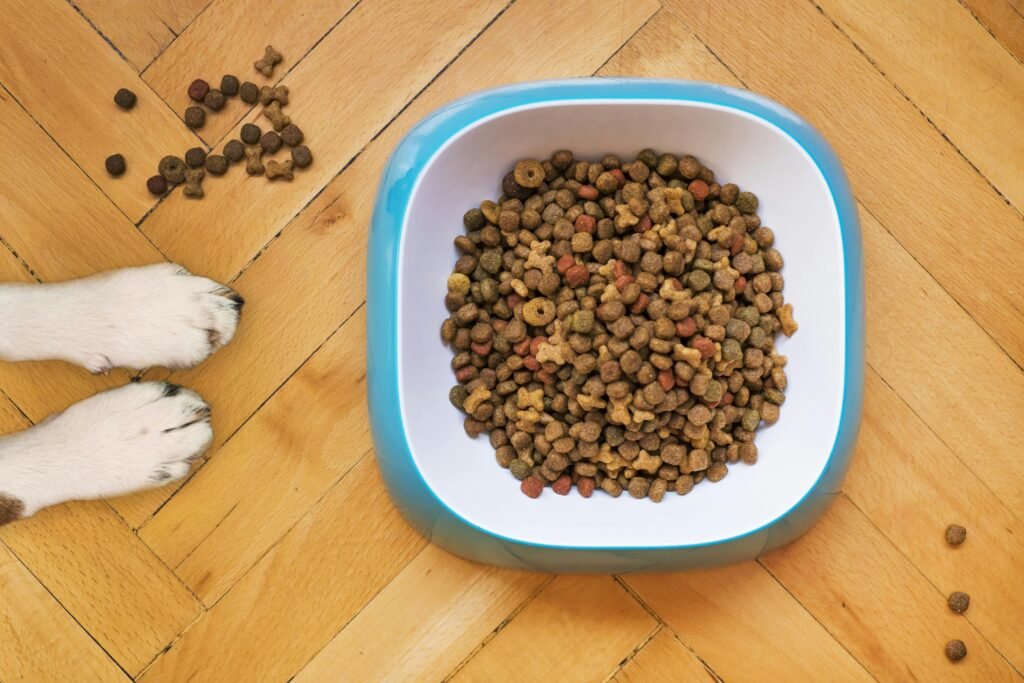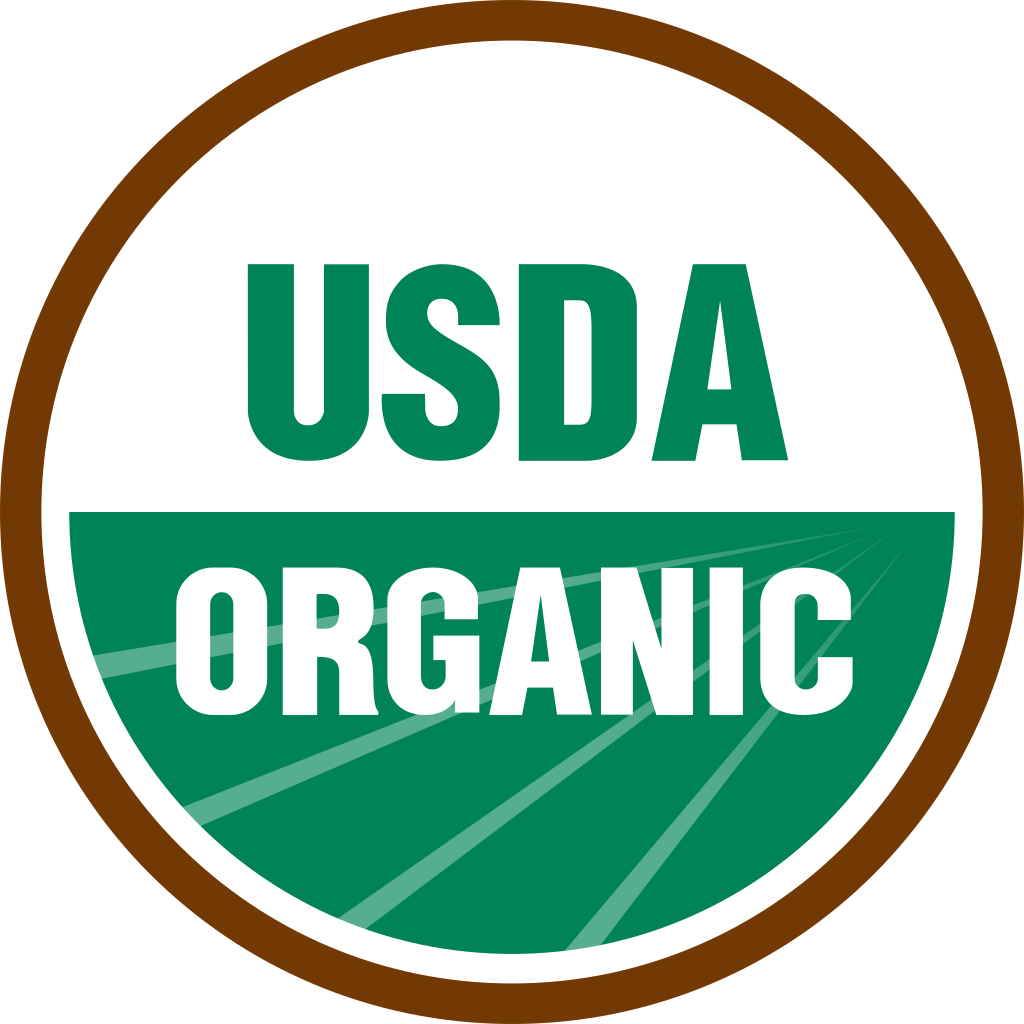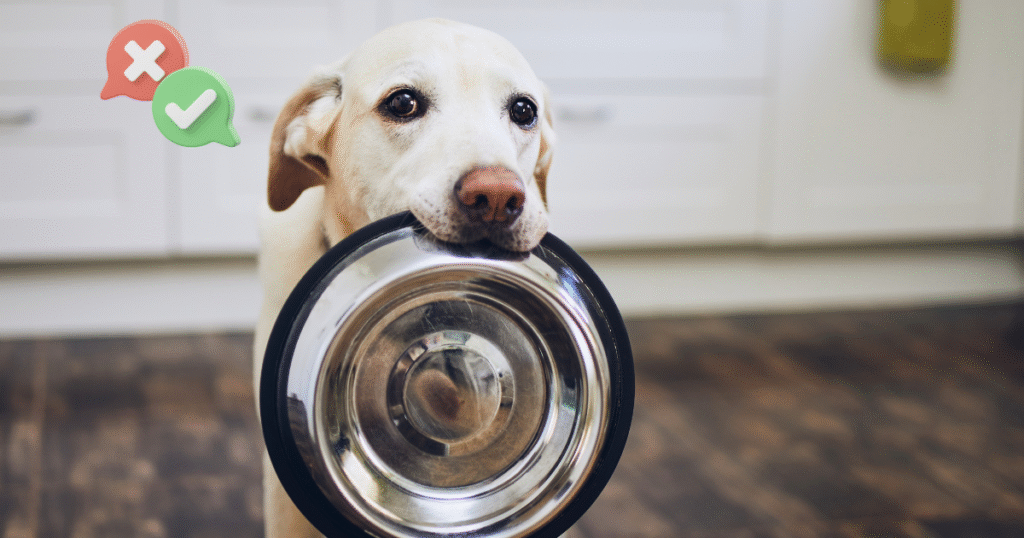Table of Contents
As pet parents in the modern world, we’re constantly thinking about the well-being of our furry family members. We want them to be happy, healthy, and live their best lives right alongside us. But if you’re anything like us – part of the generation that recycles religiously, carries reusable bags, and tries to make conscious choices about where our products come from – you’ve probably started wondering about the eco-impact of everything, including what goes into your dog’s bowl.
That’s where “organic dog food” comes into the picture. It’s more than just a buzzword; for many, it represents a choice that’s potentially better for our pups and the planet we share with them. Let’s dig into why we might choose organic dog food and what to look for.

So, What Exactly Does “Organic” Mean for Dog Food?
When we talk about organic food for humans, we usually think of produce grown without synthetic pesticides or fertilizers, and meat from animals raised without routine antibiotics or growth hormones, fed organic feed themselves. For dog food, the principles are similar, though the regulations are specific.
Think of it like this: Imagine your kitchen. You can buy ingredients from a conventional supermarket or visit a farmer’s market known for organic produce and ethically raised meat. Choosing organic ingredients for your own meals is about knowing how that food was produced, minimizing exposure to certain chemicals, and often supporting farming practices that are intended to be more sustainable.
For dog food to be labeled “organic” in the US, it generally needs to meet standards set by the USDA’s National Organic Program (NOP). This means:
- Ingredients are produced without the use of synthetic pesticides, herbicides, or fertilizers (for plant-based ingredients).
- Meat comes from animals raised in living conditions that accommodate their natural behaviors, given access to the outdoors, and not given routine antibiotics or growth hormones (for meat-based ingredients).
- The food must be produced using organic methods, avoiding genetic engineering and prohibited substances.
Look for the USDA Organic seal. A product labeled “organic dog food” must contain at least 95% organically produced ingredients. Products labeled “made with organic ingredients” contain 70-94% organic ingredients.

Why Might We Choose Organic Dog Food?
Opting for organic isn’t just about following a trend; for many eco-conscious pet parents, it stems from a few key concerns:
- For Our Pup’s Health: While research specifically on the long-term health benefits of organic dog food vs. non-organic is still evolving, the idea is that by choosing organic, we might be reducing our dog’s exposure to synthetic chemicals, pesticides, and potentially controversial additives sometimes found in conventional farming and food production. Some pet parents report improvements in their dog’s digestion, skin issues, or allergy symptoms when switching to organic or natural foods, though this can vary greatly by individual dog and specific diet.
- For the Planet: This is a big one for us eco-minded folks! Organic farming practices often prioritize soil health, biodiversity, and conservation of water resources compared to conventional methods. By choosing organic ingredients, we’re potentially supporting farming systems that aim for a lighter environmental footprint, reducing chemical runoff and promoting more humane animal welfare standards.
- Transparency and Quality: Brands committed to organic often place a higher emphasis on ingredient traceability and quality sourcing. This can give us greater peace of mind about exactly what we’re feeding our beloved companions.
Navigating the Organic Dog Food Landscape
The world of “natural” and “organic” pet food can sometimes feel a bit overwhelming. You’ll see terms like “natural,” “holistic,” “grain-free,” and “organic.” Remember that “natural” doesn’t mean “organic.” “Natural” usually refers to ingredients derived from plant, animal, or mined sources without being chemically synthesized, but it doesn’t have the same strict certification process as “organic” regarding farming methods and prohibited substances. Sites like The Good Trade often highlight brands focusing on natural or sustainable practices, which is a great starting point for discovering companies that align with our values, but always check for that specific “organic” certification if that’s your goal.
When we’re looking for good organic dog food for our furry family, we consider a few things:
- USDA Organic Certification: As mentioned, this is the gold standard for “organic.”
- Ingredient List: Look for whole, recognizable ingredients at the top of the list (organic meat, vegetables, grains if not grain-free). Avoid artificial colors, flavors, and preservatives.
- Life Stage: Does the food meet the nutritional needs for your dog’s age (puppy, adult, senior) and size?
- Specific Needs: Does your dog have allergies or sensitivities? Even within organic options, ingredient profiles vary.
- Brand Reputation: What are other pet parents saying? How transparent is the company about their sourcing?

Beyond the Bowl: More Eco-Friendly Pet Love
Choosing organic dog food is a fantastic step, but the eco-conscious pet parent journey doesn’t stop there! We also think about:
- Biodegradable poop bags
- Toys made from recycled or natural materials
- Sustainable grooming products
- Reducing waste by buying larger bags of food or considering brands with better packaging
- DIY pet treats using organic ingredients
It’s all part of creating a more sustainable life alongside our beloved pets.
Making Your Choice
Deciding to explore organic dry dog food, organic wet dog food, or any new diet is a personal choice based on your research, your vet’s advice, and your dog’s specific needs. It’s about aligning your values with the care you provide for your furry family member. Choosing organic food for dogs is one powerful way we can try to give them the best while being mindful of our planet.
Taking the time to research different organic dog food brands and their specific ingredients is key to finding the right fit for your canine companion.

FAQ Section
Q: Is organic dog food better for allergies?
A: While some dogs with sensitivities may benefit from the potentially cleaner ingredient profile of organic food (fewer synthetic additives or pesticides), “organic” itself doesn’t guarantee it’s hypoallergenic. You still need to check the specific ingredients for common allergens like chicken, beef, dairy, wheat, or soy if your dog has known sensitivities.
Q: Is organic dog food grain-free?
A: Not necessarily. Organic refers to the farming methods of the ingredients. You can find organic dog food that contains organic grains (like organic brown rice or organic oats) or organic dog food that is also grain-free (using ingredients like organic sweet potatoes or lentils).
Q: How much does organic dog food cost compared to regular dog food?
A: Organic dog food often costs more than conventional options due to the higher cost of organic farming practices and certification. Think of it as an investment in potentially higher quality ingredients and more sustainable production methods.
Q: Where can I find good organic dog food brands?
A: You can often find organic dog food at specialized pet stores, natural grocery stores, and online retailers. Researching different brands and reading reviews is a good way to start.
Q: How do I switch my dog to new food?
A: It’s best to transition your dog gradually over about a week. Mix increasing amounts of the new food with decreasing amounts of their old food each day to avoid upsetting their stomach. Consult your vet if you have concerns.


